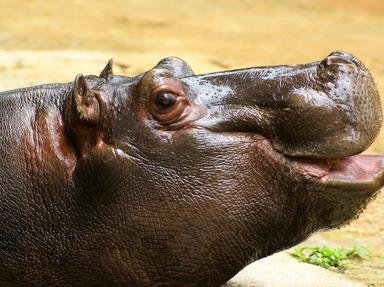Quiz Answer Key and Fun Facts
1. "Though I'm often placed at the top of the food chain, I have my own, personal problems. Firstly, I am covered in spots, though I am told that they will disappear when I reach adulthood. Also, I can't stand how loud my dad is - he makes one of the loudest and most recognisable sounds in the African savannah."
Which animal's juvenile life is this passage describing?
2. "Being an insect, I'm pretty lucky to have been cared for by my mother, as most nymphs are just abandoned. As it turned out, however, my mother worked too hard, gathering fruit for me and my many siblings to eat. Whilst this kept us alive, it exhausted her and she eventually passed away."
For which of these animals is this a typical experience?
3. "Don't be fooled by my apparent permanent grin; life is quite difficult for me, being as underdeveloped as I am. My fellow amphibians come back occasionally to tell me of how great the land is, but I can't go there myself."
Which animal is being described here?
4. "People often criticise me, saying that I should have left home a long time ago and that I eat far too much. It's not my fault my parents spoil me! They feed me so much that, even though I am only a chick, I weigh more than they do. I had a happy childhood and my parents have been together and faithful to one another for almost 30 years."
Which bird's chick is this passage regarding?
5. "I'll admit that I don't get out much. It actually took me 17 years to crawl out from under the soil! Before that, I'd just sit about, eating the juices of tree roots. Nowadays, since I am a male of my species, I go about making very loud noises in the hope of finding a mate."
Which type of animal includes species for which this is a typical experience?
6. "I have some impressive qualities - when I grow up, I will be able to do things that no other land animal can do, yet I'm often ridiculed for my spotty appearance, high-pitched voice and spiked up hair."
Which young African animal is being described here?
7. "After my mother laid me and my 200,000 sibling eggs, she was off. When I was growing up, I feel my father was far too overprotective, turning black with anger when anyone even came near me. I guess that's what happens when your dad's in the army."
Which of these is a real species of fish and is being described here?
8. "I'd like to think that I'm quite a clever young chap, as I was born with the instinct to swim. This instinct came in handy, and I have been known to swim continuously for several weeks at a time. All in all, I've had quite a happy childhood (I was lucky to have even survived), though I am often teased for being a "late bloomer", as I have to wait to the age of 50 until I reach sexual maturity."
Which creature is most likely to give this description of their early life?
9. "Since my birth, I've been a bit of a celebrity. In 2001, I became living proof that my species is capable of parthenogenesis. Everyone says that I'm a lot like my mother, and this was confirmed in 2007 after lots of DNA tests."
This species is called the bonnethead, but what type of creature is it?
10. "Although I am a reptile, I was adopted and cared for by a colony of termites soon after I was laid. After I hatched, however, I felt it was time to leave the mound."
Which reptile is this a typical experience for?
Source: Author
doublemm
This quiz was reviewed by FunTrivia editor
crisw before going online.
Any errors found in FunTrivia content are routinely corrected through our feedback system.

